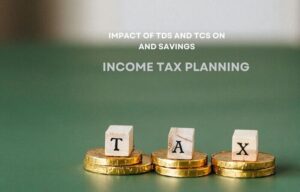Understanding ACORD 127 – Business Auto Section in Insurance

When it comes to managing the risks associated with business vehicles, ACORD 127 – Business Auto Section serves as an essential tool in securing the appropriate coverage. In today’s fast-paced business environment, vehicles are not just transportation; they are key assets that support daily operations. Whether it’s for company cars, trucks, or other vehicles used in business activities, having the right coverage is crucial to protecting your assets, minimizing liability, and ensuring business continuity.
This standardized form helps business owners and insurance agents clearly define the protection needed for their vehicles. In this article, we’ll explore what ACORD 127 is, the information required, its usage, and how it helps streamline the process of obtaining business auto insurance coverage.
What Is ACORD 127?
ACORD 127 is a standardized form used to request insurance coverage for vehicles used in business operations. The form collects detailed information about the business’s auto fleet, including vehicle types, usage, and drivers. It also captures critical data about the business’s operations, providing insurers with the necessary information to assess risk and determine the appropriate coverage and limits.
The Commercial Auto Insurance Market is expected to grow to USD 398.46 billion by 2032, emphasizing the increasing need for businesses to secure proper vehicle coverage as their operations expand. This form is often completed alongside ACORD 125 – Commercial Insurance Application, which offers additional business details, and other ACORD forms addressing specific liability needs.
Key Information on ACORD 127
The ACORD 127 form includes several essential sections to determine eligibility and risk associated with business vehicle coverage. Insurance back office solutions, like those offered by CLICKVISION BPO, efficiently manage these details, ensuring accuracy and timely completion. These key details include:
Applicant Information
This section includes the name of the business, address, and other contact information. It ensures the insurer knows exactly who is requesting coverage and can correctly link the application to the business’s account.
Vehicle Information
A major part of ACORD 127, this section requires applicants to provide detailed descriptions of the vehicles to be insured.
Information such as make, model, year, VIN (vehicle identification number), and the vehicle’s primary use is required. These details are crucial for accurately assessing the risk associated with each vehicle.
Driver Information
This section collects details about the drivers who will operate the vehicles, including age, experience, driving record, and any relevant certifications. Insurers use this information to assess the likelihood of accidents and claims based on the driver’s profile.
Coverage and Limits Requested
Applicants must indicate the level of coverage required, including liability, collision, comprehensive, and other optional coverages. This section helps insurers provide a policy that meets the business’s specific needs.
Business Operations and Use of Vehicles
The form includes information about how the vehicles are used within the business’s operations. Whether they are used for transporting goods, providing services, or employee commuting, understanding vehicle usage is key to determining the coverage limits.
Claims History
Applicants must disclose any previous claims related to their business vehicles. This history helps insurers assess risk and understand the likelihood of future claims, which can influence policy costs.
When Is ACORD 127 Used?
ACORD 127 is used by businesses that need to secure or renew insurance for their company vehicles. Common situations where this form is utilized include:
- Businesses acquiring new vehicles for their fleet.
- Companies needing to add additional vehicles to an existing insurance policy.
- Businesses updating their vehicle insurance due to a change in fleet size or usage.
- Companies seeking insurance coverage for newly hired drivers or added employees.
By understanding when and how to use ACORD 127, businesses can ensure they maintain the proper coverage for their vehicles and drivers, minimizing risk and meeting insurance requirements efficiently.
Considerations for ACORD 127
Before completing ACORD 127, businesses should keep the following factors in mind to ensure accurate coverage:
- Accuracy of vehicle information: Ensure that all vehicle details are accurate and up to date to avoid discrepancies that could lead to coverage issues.
- Driver qualifications: Provide full details about all drivers, including driving records, to help insurers assess the risk.
- Appropriate coverage selection: Evaluate the specific risks associated with your business’s vehicle usage to ensure the correct coverage limits are selected.
- Transparency with claims history: Disclose all prior claims accurately to avoid complications during the underwriting
By addressing these key considerations, businesses can ensure a smoother application process and secure the most suitable coverage for their fleet, protecting both their assets and operations.
Conclusion
ACORD 127 is a crucial form for businesses looking to secure reliable and comprehensive coverage for their vehicle fleets. By providing insurers with essential details about vehicles, drivers, and usage, this form allows businesses to obtain the right liability and accident protection.
Completing ACORD 127 accurately ensures that businesses are well-covered against potential risks and enables them to meet insurer and regulatory requirements. Properly filling out this form not only protects a business’s vehicles but also ensures the long-term safety and stability of its operations.

Pranab Bhandari is an Editor of the Financial Blog “Financebuzz”. Apart from writing informative financial articles for his blog, he is a regular contributor to many national and international publications namely Tweak Your Biz, Growth Rocks ETC.








